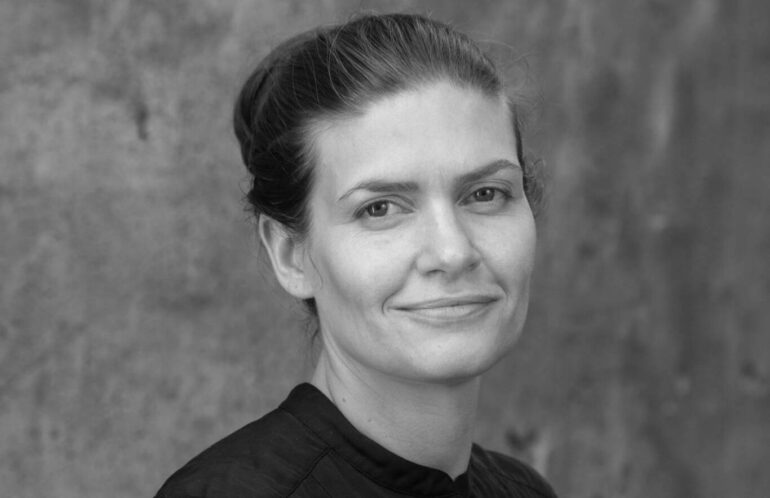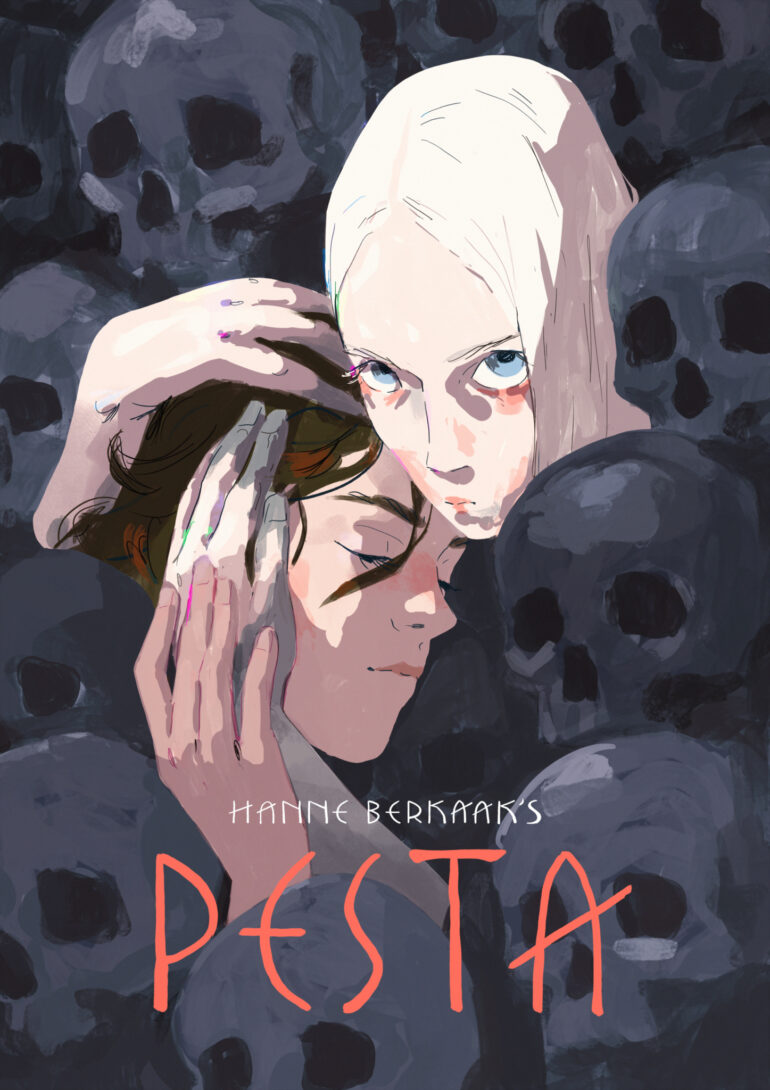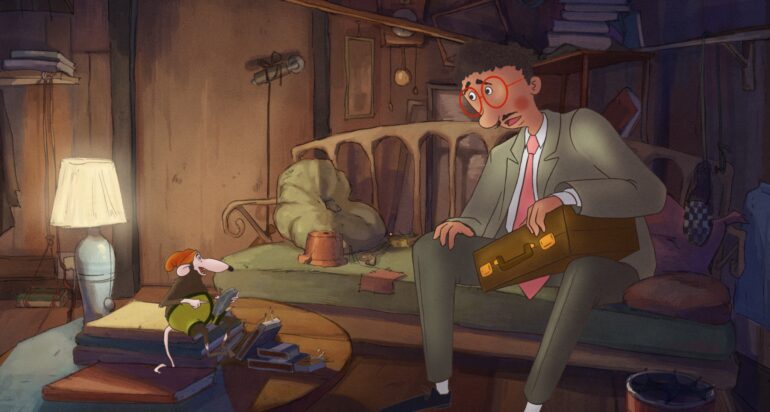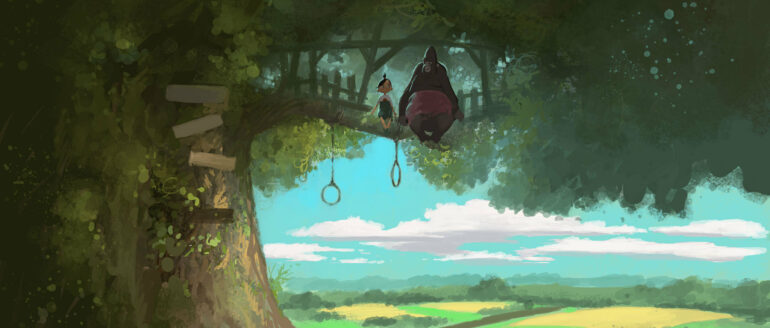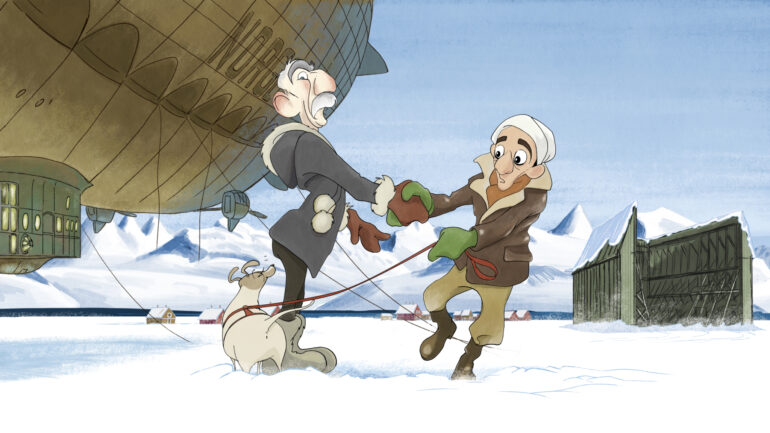WRITTEN BY: Geoffrey Macnab
Norwegian Mikrofilm did a vast audience research for their unique film Pesta. Producer Reiersen shares the results and discusses AI, animation financing and company strategies.
Oscar winning Norwegian animation outfit Mikrofilm is hard at work on the new romantic horror pic Pesta, a film firmly targeted at an older teen audience. Producer Tonje Skar Reiersen explains why big Nordic projects need international partners - and why women make the best collaborators.
“We are a very artistically driven studio. The owners of Mikrofilm are two producers, Lise Fearnley and myself, and two directors, Kajsa Næss and Cathinka Tanberg. We are not like a studio model where you have some executives on the top, stating how we can make money now, where we should go and what should be our vision and mission. It is more artistically driven,” Reiersen sums up the ethos at the company. She joined the outfit in 2011 when Fearnley was looking for a production manager for Hocus Pocus Alfie Atkins (Hokus Pokus Albert Åberg). “She just needed someone who was reliable and organised.”
After producing many successful shorts, Reiersen and Fearnley made the leap into features with Titina (2022), a polar epic directed by Næss about an expedition involving Norwegian explorer Roald Amundsen, Italian airship engineer Umberto Nobile, and a dog. The company also has a long standing relationship with the National Film Board of Canada that began with director Torill Kove’s Oscar winning short The Danish Poet (Den danske dikteren, 2007).
Are you aiming beyond the family audience with your new romance horror feature Pesta?
I really hope no-one brings their family! It is definitely 16 plus, both because of the explicit romance and the horror elements. We won the Eurimages development award at Cartoon Movie last year, and now we have started financing the film. That takes quite some time when you do it the traditional European way, and so we expect to premiere the film in 2028. We have done very extensive work with Danish company Will & Agency to see what kind of content attracts teen audiences on both TikTok, streamers and cinema. This has included in-depth interviews with 28 respondents about our project, and how they regard everything from the design to the characters and specific scenes. When the film is released in 2028, we will know very well who we are talking to.
Could this be a project to attract the streamers?
Right now, the US based streamers are not buying anything. But of course, at some point, they will need new films and series. Hopefully, they will go for Pesta, but for us it is firstly a theatrical film. When we did the interviews with Will & Agency, we asked the informants where they would like to see the film. We expected them to say Netflix, because that is what they are mostly used to - but all of them said “cinema”. The two genres kids want to see in the cinemas are comedy and horror. It enhances the horror experience to watch that film in the theatre. They also said the visuals looked stunning and beautiful, and so they wanted to see it on the big screen. That was music to our ears. Everyone is complaining that the young audience is not going to the cinema any more, but if you look at the Norwegian data, yes, they are going to the cinema less than 10 years ago, but 16- to 25-year-olds are still the second most frequent audience group.
Why do you have to look beyond the Nordics for support?
We are forced to do the production outside of Norway for several reasons. One is financing; it is next to impossible to raise 7-8 million euros in the Nordics alone. When you have partners, you need to put work in their studios. It is also a question of talent. The Nordic industry is quite small. We are 5.5 million people in Norway. We are very strong in 3D, but there are not that many 2D artists.
Is it frustrating that you can’t find more support within the Nordic countries?
There’s a budget limit. We have a Swedish feature that we are co-producing with the Danish company Nørlum Studios, Me, Dante And The Dump (Jag, Dante och miljonerna) by Linda Hambäck. It’s the same companies we did The Ape Star (Apstjärnan) with, but this is a smaller film, with a little less than half the budget of Titina, which was €8.5 million, and Pesta will be around €7.5 million - and that is hard to raise in the Nordics.
How important is the Nordisk Film & TV Fond to the Nordic animation eco-system?
Very important. They’re very flexible and forthcoming in terms of instalments etc. With animation, you have such a long production period, and cash flow is always an issue. We love to work with them. Another thing that is great with the Fund is that it forces you (in a good way) to secure distribution in the other Nordic countries at an early stage. But it is also challenging, because the markets in the Nordics are very different. A few of the big players like SF, Nordisk Distribution and Scanbox - when you have projects that fit into their fold, then you’re home free, which is great. But not every project is like that.
Can generative AI help remove some of the drudgery from animation?
We are a little bit in a wait-and-see position. It would be great if AI could help with some of the more repetitive tasks, because animation is extremely time consuming. If AI could help with that, it would be brilliant, but we still haven’t seen any examples that have been convincing. Even though you’re doing a repetitive task, you still need to think about things and make decisions. As a producer, you’re always eager to find ways to cut corners in that department, save money, and then you can spend more money on the more creative side of things - or also lower the budget a bit. One worry with AI is for the juniors, because that is how you train in animation. You get your first job doing junior tasks, clean up, colouring backgrounds etc. If a lot of that is done by AI, and your job is just to correct something that has been generated, then of course you won’t have the same training.
You had great success with animated shorts. Why have you taken the leap into features?
In the case of Titina, it was Kajsa who wanted to make this story. The need to produce features came because we wanted to do that specific film. But after Titina, of course, you discover it’s a lot of fun. It’s hard, it’s time consuming. But it is so much fun to work on features. Now it is more of a strategic choice, and we want our directors thinking about features, but we will also still do shorts, as that is part of the DNA.
What are the pros and cons for 360 universes?
In animation, you do build the world from scratch. 360 is very obvious. With Pesta, we are already doing that. We are doing a graphic novel inspired by the story that will be in the bookstore six months before the film arrives. I have a meeting concerning a possible game version as well.
Is there still a life for originals?
I hope so, because that’s our business model! It s much easier to take a well known IP that everyone loves and put that in the market. But we can’t endlessly make the same stories again and again. At Mikrofilm, we are more intrigued by doing something new.
On Titina and other projects, you’ve had many female heads of department. Is that a conscious decision?
We always say we are not opposed to working with men. There are many talented men out there. If they are good enough, they can work with us! We go with the best…but I have to say generally I find it easier to work with female producers, and if there is a conflict, to find common ground.
